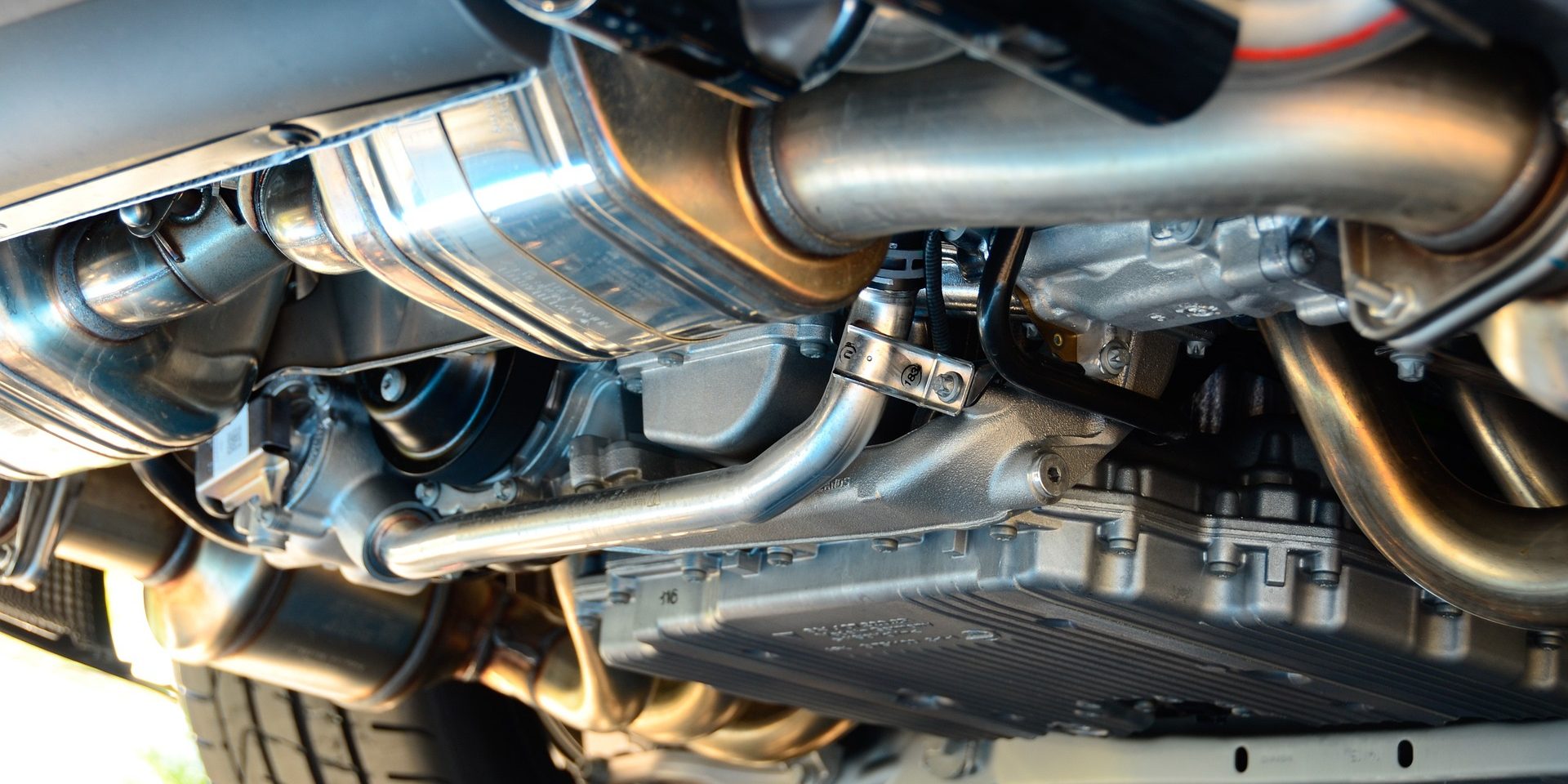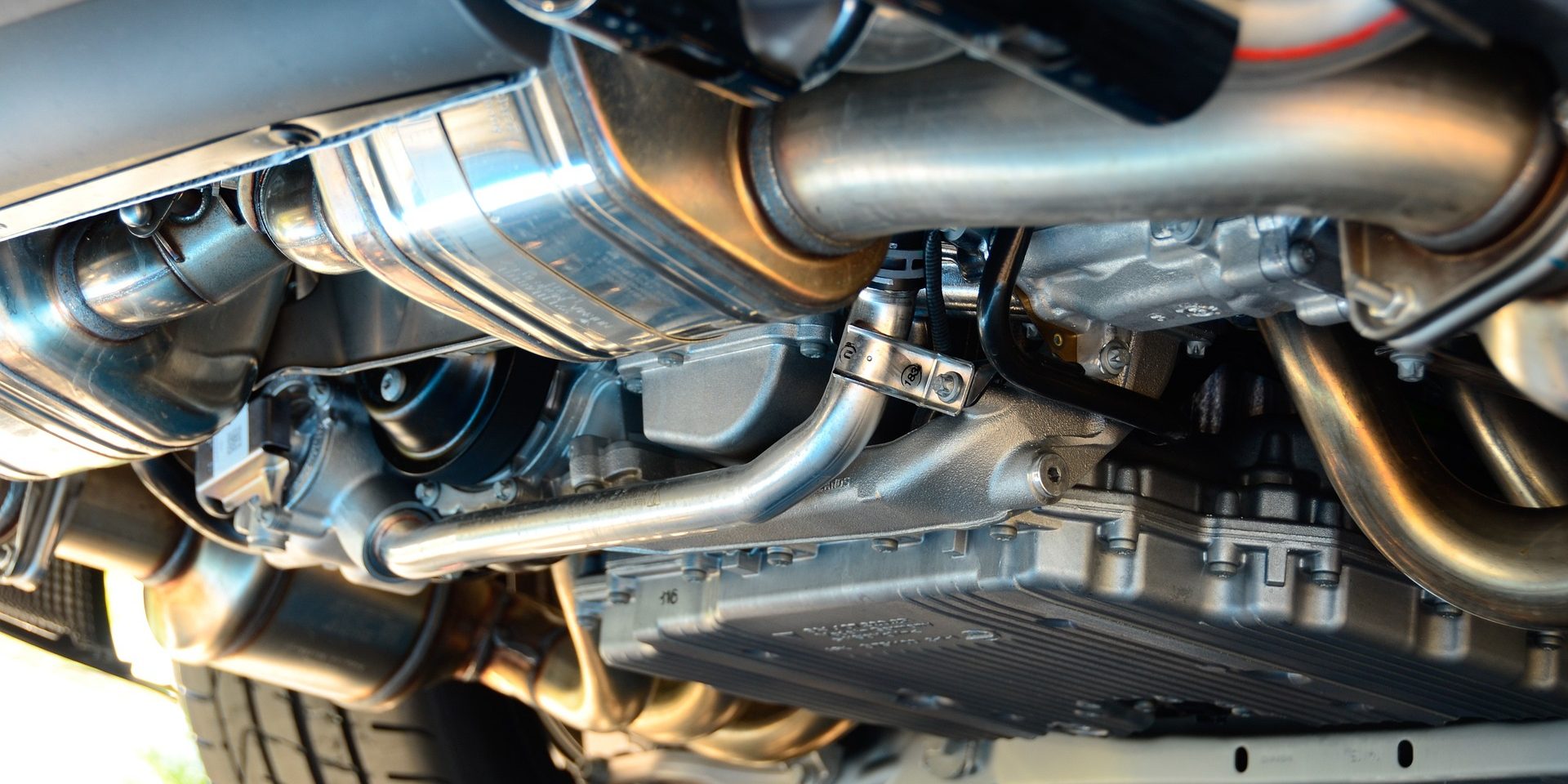How Many Catalytic Converters Does A Car Have?


Catalytic converters are crucial for reducing emissions in vehicles. Their primary purpose is to convert harmful pollutants into less harmful substances before exiting through the exhaust system. Without them, vehicle emissions could be incredibly damaging to both human health and the environment.
So, how many catalytic converters does a car have? In most cases, cars will have one or two catalytic converters. However, this can vary depending on the make and model of the vehicle.
It’s essential to note that not all vehicles will have the same number of catalytic converters. Some high-end models or cars with larger engines may require more than one converter to meet emission standards. Additionally, different regions around the world have various regulations when it comes to emissions, which may affect how many converters a car needs.
Interestingly, catalytic converters were not always required in vehicles. They were first introduced in 1975 in response to growing concerns about air pollution caused by vehicle emissions. Today, they are an essential component of all cars sold worldwide in an effort to reduce harmful emissions.
Catalytic converters: making your car environmentally friendly, one chemical reaction at a time.
Understanding Catalytic Converters
To understand catalytic converters in your car, dive deeper into the definition and purpose of these mechanisms. Get to know how they work and how they help reduce emissions. This information is essential for every car owner; this section covers the sub-sections – ‘Definition and Purpose of Catalytic Converters’ and ‘How Catalytic Converters Work’.
Definition and Purpose of Catalytic Converters
Catalytic converters are devices incorporated into vehicles to reduce the harmful effects of emissions. These mechanisms convert toxic gases emitted by engines into less harmful substances, such as carbon dioxide and water vapor. The primary purpose of a catalytic converter is to reduce air pollution while still allowing the car’s engine to function optimally.
Catalytic converters consist of two main components: a catalyst and a substrate. The substrate acts as a support system for the catalyst, which then works to neutralize the harmful exhaust gases. As mentioned above, the result is a conversion of noxious pollutants into cleaner emissions that are more eco-friendly.
It is worth noting that not all cars come equipped with catalytic converters. For example, some older models may have been manufactured before these devices were mandatory. In such cases, installing a catalytic converter after-market could potentially decrease air pollution levels significantly.
Interestingly, thefts of catalytic converters have become increasingly common in recent years due to their high-value component parts. It’s essential to protect your vehicle by parking it in areas monitored by security cameras or keeping it inside a garage whenever possible.
How Catalytic Converters Work
Catalytic converters are emission control devices installed in vehicles to reduce harmful exhaust emissions. They work by converting toxic gases into less harmful ones through a chemical reaction. Using precious metals such as platinum, palladium, and rhodium, the converter transforms nitrogen oxide into nitrogen and oxygen, carbon monoxide into carbon dioxide, and unburned hydrocarbons into carbon dioxide and water.
As the engine runs, the exhaust gases flow through a honeycomb-like ceramic structure inside the converter that is coated with the precious metals mentioned earlier. The surface area of the honeycomb increases, causing more of the exhaust gas to come in contact with it, thus increasing the efficiency of the conversion process.
It’s important to keep your catalytic converter working efficiently for optimal vehicle performance and to comply with emissions regulations. Regular maintenance can help prevent damage to the converter caused by misfires or faulty oxygen sensors.
These days, catalytic converters are required by law in most countries as they are an effective way of reducing pollution from vehicles. Their invention dates back to 1950s France when engineers first started experimenting with ways to reduce vehicle pollution.
Why settle for just one type of catalytic converter when you can have a whole smorgasbord of options to choose from?
Types of Catalytic Converters
To understand the different types of catalytic converters, dive into the section on “Types of Catalytic Converters” with an overview of the various solutions available. This section covers the four sub-sections: Two-Way Catalytic Converters, Three-Way Catalytic Converters, Diesel Oxidation Catalysts (DOCs), and Selective Catalytic Reduction (SCR) Catalysts.
Two-Way Catalytic Converters
Modern vehicles come equipped with advanced emission control systems, and one of the most important components of this system is a catalytic converter. Two-way catalytic converters are one type of catalytic converter used in automobiles. They are designed to reduce two types of pollutants, namely carbon monoxide and hydrocarbons, released as byproducts from the combustion process.
To understand the functioning of two-way catalytic converters better, take a look at the table below:
| Type | Function |
|---|---|
| Reduction | Converts No to N2 |
| Oxidation | Converts CO and Hydrocarbons into CO2 and H2O |
The reduction section of the table explains how two-way catalytic converters eliminate nitrogen oxides (NOx) emissions by converting them into nitrogen gas (N2). In contrast, the oxidation part highlights how these converters reduce carbon monoxide (CO) and hydrocarbon emissions by converting them into carbon dioxide (CO2) and water vapor (H2O).
It is worth noting that while two-way catalytic converters are highly effective in reducing some pollutants, they do not address other harmful emissions such as particulate matter.
According to a study conducted by the US Environmental Protection Agency (EPA), cars equipped with catalytic converters can significantly reduce environmental pollution. The study found that since it was first introduced in 1975, this technology has helped to reduce around 100 million tons of air pollution in the United States alone.
Who knew a converter could be so versatile? Three ways to reduce emissions, but only one way to make a killer punchline.
Three-Way Catalytic Converters
A type of catalytic converter that is efficient for decreasing emissions from gasoline engines is the three-functional catalytic converter. It can lower levels of pollutants such as nitrogen oxide, carbon monoxide, and hydrocarbons simultaneously.
To better understand its effectiveness, we can look at a table with actual data displaying the conversion efficiencies of these emissions within a three-functional catalytic converter. The columns may include NOx, CO, HC conversion efficiencies, and inlet and outlet concentrations. By analyzing this data, we can see how efficiently these converters reduce harmful gas emissions.
It is important to note that the performance of a three-way catalytic converter may be affected by various factors such as fuel composition, temperature conditions, and engine operation modes. Therefore, additional research must be conducted to determine ideal conditions for optimal efficiency.
Pro tip: Regular maintenance of your vehicle’s catalytic converter can aid in prolonging its effectiveness in reducing emissions. If your car’s emitting more smoke than Snoop Dogg, it’s time to consider a Diesel Oxidation Catalyst.
Diesel Oxidation Catalysts (DOCs)
Diesel vehicles use a certain type of converter known as Diesel Oxidation Catalysts (DOCs). The DOC is an important component of the engine’s exhaust system that converts harmful substances like carbon monoxide, hydrocarbons and nitrogen oxides into less harmful substances like carbon dioxide and water.
Below is a table showing the different types of DOCs and their functions:
| Types of Diesel Oxidation Catalysts | Functions |
|---|---|
| Paper-based catalysts | Reduces unburned hydrocarbons emissions. |
| Ceramic-based catalysts | Converts up to 90% of carbon monoxide emissions, hydrocarbons, and particles. |
It is important to note that when a diesel vehicle’s DOC fails, it can cause the engine to produce more emissions than legally allowed, which results in fines. Moreover, excessive amounts of emissions from diesel engines pose a considerable threat to human health and environment. Always ensure your vehicle’s DOC is working correctly by following the manufacturer’s maintenance guidelines.
Guess what? SCR Catalysts don’t just neutralize harmful emissions, they also make your car sound smart at parties.
Selective Catalytic Reduction (SCR) Catalysts
To reduce harmful emissions from diesel engines, one of the types of catalytic converters used is a catalyst system that initiates selective catalytic reduction (SCR). This system works by reducing or removing nitrogen oxide (NOx) and other pollutants from the engine’s exhaust gases by converting them into less harmful substances.
A table outlining various aspects of SCR catalysts can provide a better understanding of how they work. The table can include columns for the name, function, materials, and benefits of SCR catalysts. For example, some popular materials used in these systems include platinum, palladium, and rhodium. Moreover, SCR catalysts have been found to be more effective than other systems in controlling NOx emissions, which has led to broader adoption in emission control regulations worldwide.
One essential aspect to note about SCR catalysts is that they must operate within an optimal temperature range between 200°C and 400°C. If the temperature drops below this range or exceeds it by too much, the efficiency of the system will decrease significantly and could even result in incomplete conversion of NOx.
To optimize the performance of SCR catalysts effectively, it is suggested that drivers maintain their engines adequately and replace any faulty or worn out parts regularly. Additionally, it is essential to ensure vehicles are correctly calibrated for optimum performance given varying driving conditions. By doing so, we can minimize harmful emissions in our environment while promoting sustainability practices.
How Many Catalytic Converters Does a Car Have?
To know how many catalytic converters your car has, you need to understand the type of engine fuel it uses. Gasoline and diesel engines have different requirements, leading to differences in the number of catalytic converters present in the exhaust system. In this section, we’ll explore the number of catalytic converters in gasoline and diesel cars as a solution. The two sub-sections we will cover include the number of catalytic converters in gasoline cars and the number of catalytic converters in diesel cars.
Number of Catalytic Converters in Gasoline Cars
Gasoline cars require catalytic converters to reduce emissions. A single car can have multiple catalytic converters depending on the car’s size and make. These converters are necessary to reduce emissions, comply with regulations, and promote a cleaner environment.
Compact and mid-sized cars generally have one converter, while larger SUVs may need two or more.
Another detail worth mentioning is that newer models tend to have stronger and more efficient catalytic converters than older ones. This improvement has led to better environmental standards over time.
Interestingly, the concept of emissions control using catalytic converters dates back to the 1950s when John Mooney designed the first “oxidation catalyst” for a petroleum refining process. Later on, engineers worked towards adapting this technology for use in cars, leading up to its implementation in modern-day vehicles.
Diesel cars may seem like the black sheep of the family, but they still have to abide by the same catalytic converter rules.
Number of Catalytic Converters in Diesel Cars
Diesel engines are commonly used in heavy-duty vehicles, such as trucks and buses. These engines have at least two catalytic converters to reduce emissions and comply with environmental regulations.
The following table shows the number of catalytic converters in diesel vehicles:
| Vehicle Type | Number of Catalytic Converters |
|---|---|
| Trucks | 2 – 3 |
| Buses | 2 – 5 |
| Cars | 1 |
It is interesting to note that buses can have up to five catalytic converters due to their larger size and higher emissions.
According to the Environmental Protection Agency (EPA), catalytic converters have been required on all new cars since 1975. This regulation has greatly reduced pollution from vehicles and improved air quality.
More catalytic converters in a car typically means more smog, but at least you’ll be driving a vehicle with built-in air purification.
Factors Affecting the Number of Catalytic Converters in a Car
To understand the factors affecting the number of catalytic converters in a car with different makes and models, engine sizes and types, and emission standards is the solution. Exploring the varying benefits of each sub-section can enable you to appreciate the nuances and unique benefits for your vehicle.
Vehicle Make and Model
The impact of a Car’s Brand and Model on its Catalytic Converter
Different vehicle brands and models use a varying number of catalytic converters in their exhaust systems. Here are five points explaining the impact of the car’s brand and model on its catalytic converter:
- Engine size, performance, and type can affect the number of catalytic converters required to comply with regulations.
- Newer car models often have advanced emission control systems that utilize multiple catalytic converters.
- Cars with hybrid or electric powertrains may not require catalytic converters as they produce fewer emissions than traditional gasoline engines.
- The legislation for catalytic converter requirements is different depending on the country or state where a car is sold.
- Sportier cars, which prioritize high performance over fuel efficiency, have fewer converters as they produce higher levels of harmful pollutants from their engine exhausts.
It is worth mentioning that luxury car brands such as BMW and Mercedes tend to incorporate more sophisticated emission control systems due to their focus on producing higher-end vehicles.
A true fact is that according to the Environmental Protection Agency (EPA), roughly half of all air pollution in America comes from vehicles like cars and trucks.
Your car’s engine size doesn’t matter, unless you’re compensating for something… like your lack of understanding about catalytic converters.
Engine Size and Type
The engine determines the power and performance of a vehicle. The size and type of engine also have an impact on the number of catalytic converters needed for a car to comply with emission standards.
Below is a table outlining the types and sizes of engines commonly found in vehicles, along with the number of required catalytic converters:
| Engine Type | Engine Size | Number of Catalytic Converters |
|---|---|---|
| Gasoline | <2.0L | 1 |
| 2.0L-3.0L | 2 | |
| >3.0L | 3 | |
| Diesel | <1.5L | 1 |
| >1.5L | 2 |
It’s important to note that diesel engines often require more catalytic converters due to their higher emissions levels compared to gasoline engines.
In addition to engine size and type, other factors that affect the number of catalytic converters include exhaust system design, fuel quality, and driving habits.
To ensure compliance with environmental regulations and prevent harmful pollutants from entering the atmosphere, it’s crucial to understand the importance of having the correct number of catalytic converters in a vehicle.
Don’t risk non-compliance or harm to the environment – make sure your car has the correct number of catalytic converters installed today.
Emission Standards
1. Regulations on Automobile Emissions:
Governments set regulations to reduce pollution levels of vehicles by enforcing compliances on automobile industries and automakers.
2. Analysis of Emission Standards:
Emission standards maintain a balance between environmental protection and vehicle performance. There are several factors that determine the number of catalytic converters in a car, and these vary based on emission standards in different regions. For example, Euro 6 regulations typically require two catalysts in the exhaust system, whereas US regulations may permit only one.
To further understand this concept, let’s take a look at the table below:
| Region | Emission Standard | Number of Catalytic Converters |
|---|---|---|
| EU | Euro 6 | 2 |
| US | Tier 3 | 1 |
| China | China VI | 3 |
It can be observed that emission standards vary regionally and dictate the number of catalytic converters needed in a vehicle for compliance.
Unique details about emissions standards include their impact on the engine’s power output, as more catalytic converters possess greater restriction to the flow of gases leading to decreased engine efficiency, which automakers must compensate for with higher horsepower engines or different systems altogether.
Ultimately, to comply with regional emission requirements, automakers may need to install more or fewer catalytic converters than expected based on factors such as fuel used and engine size.
To ensure improved air quality by reducing vehicle emissions globally, adherence to regional emission standards continues to remain paramount for car manufacturers. So it is better to adhere strictly while managing vehicular production.
Without catalytic converters, our cars would be like chain-smokers blowing smoke in our faces while we’re stuck in traffic.
Importance of Catalytic Converters in Reducing Vehicle Emissions
Catalytic converters play a significant role in reducing emissions from vehicles. They convert harmful pollutants such as nitrogen oxides and carbon monoxide into less toxic gases like carbon dioxide and water vapor. This helps to improve the overall air quality, reduce the health risks associated with pollution, and comply with environmental regulations.
Catalytic converters are typically found in vehicles equipped with internal combustion engines, such as cars and trucks. Their primary function is to reduce the emission of harmful substances into the atmosphere. This is done by facilitating chemical reactions that convert these substances into inert ones that are less harmful to the environment.
One unique detail to note is that modern-day catalytic converters are generally designed to last for a long time without needing much maintenance. However, some factors can affect their lifespan, including poor fuel quality, engine misfires, overheating, and other issues.
It’s essential to understand the importance of catalytic converters in reducing vehicle emissions if we want to help protect our environment and public health. Not having one or having a faulty one can lead to heavy fines and failing emissions tests. Therefore, regular maintenance is crucial for optimal performance and prolonging service life.
Always remember that even a small component like a catalytic converter can make a big difference in reducing pollution levels from vehicles. It’s everyone’s responsibility to ensure that they’re functioning correctly and doing their part towards creating a cleaner future.
Whether it’s one or multiple, I think we can all agree that catalytic converters are the unsung heroes of the exhaust system – silent but deadly.
How Many Catalytic Converters Does A Car Have? – Key Takeaways
Catalytic converters help reduce harmful emissions from a car’s exhaust system, and most cars have one or two installed. However, the number of catalytic converters varies depending on the vehicle’s make and model. It is essential to check your car’s manual or consult a mechanic to determine how many catalytic converters it has as this can impact its performance and emissions output. For more information on maintaining your vehicle’s exhaust system, consult with a certified mechanic.










